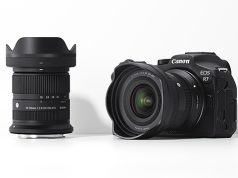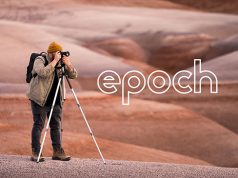Quick: what business are you in?
If your instinctive response sounds anything like selling imaging products or services, Doug Fleener would argue you’ve got your priorities mixed up. “Specialty retailers are really in the business of building a customer base,” says the retail consultant and president of Dynamic Experiences Group. “Too often they put their focus on the products and transaction rather than how the store can benefit and enhance the customer’s lifestyle.”
As a proponent of what he calls “experience based retailing,” Fleener maintains it’s what shoppers find from the time they step through the doors until they leave which ultimately determines where they will return and who gets their business.
“Too often specialty retailers think all customers are price-driven,” Fleener explains. “And shoppers will always turn to price and convenience if nothing else about a store stands out. But when they are pleasantly surprised to find their shopping experience is more enjoyable in one particular store, that’s the place they are more likely to return.”
It’s a strategy which responds to the challenges and opportunities facing today’s imaging specialty stores. After all, digital imaging is a lifestyle product, whether customers are casual snapshooters, serious amateurs or established pros. Each brings to photography specific needs that can’t be addressed in the price of the latest equipment alone. Although selection, especially in accessories and services, remains a traditional strength of the specialty dealer, consumers today also have easy, instant access to those same items over the Internet. Consequently, the specialty dealer must distinguish the store beyond product selection to build and expand the customer base.
Delivering the “Experience”
What does it take to deliver that experience? First, there’s the commitment to change, and redirect emphasis from products to customers. The goal is to maximize enjoyment of imaging products and services with a shopping experience so unique shoppers will eagerly return. For some it may mean merely expanding and refining what you’re already doing; others may find themselves rethinking their whole approach.
The actual process begins with a candid evaluation of the store’s identity to its patrons. “Most retailers believe they are delivering a much better shopping experience than they actually are,” he observes. “There can be a real difference between their perception versus the reality of how people feel about shopping there.”
Fleener suggests stepping back, and evaluating the entire shopping experience from the perspective of those you want as customers. What message are you sending them about your store in advertising and promotions? What invites passersby to step in off the street? What’s the first thing shoppers see when they pass through the doors? What expectations are you shaping about why people should shop there?
“Look at all the customer’s primary points of engagement within the store: how you communicate, the selection of merchandise, counters and displays, and the ease of flow throughout the store,” he explains. “You’ve also got to look at your front-line staff; ultimately they are the store to shoppers.”
Take the evaluation process beyond your own doors. Fleener recommends shopping both competitors and non-competitors on a regular basis for insight on how to forge a unique identity, responsive to the needs of your target market. “Too often we benchmark ourselves in terms of competitors,” he notes. “ But when we look outside our own industry, at other types of stores, we can see things in ways we might not have thought of before.”
Such assessments should provide insight on existing strengths and ways to build on them to provide a more enjoyable shopping experience. That information can serve as the basis for outlining an experience-based retail strategy. “Map out an ‘aspirational experience,’ what you want to happen to customers and all you want to convey to them from the moment they walk in the door,” says Fleener.
The plan should define a systematic approach, combining customer service and the sales process, which can be easily explained to staff, implemented and monitored.
Hand Holding
For specialty dealers, customer education is an important ingredient. Fleener recommends programs which respond to their need to know about products and solutions which can at first seem intimidating to many. “Show them the value of shopping with you by constantly demonstrating your expertise,” points out Fleener. “Educational classes and seminars are a good way to enhance the customers enjoyment of products.
Today, he says it’s important to also recognize not all shoppers have the time or inclination to enroll in and sit down for a formal class. As an alternative, he suggests providing impromptu, brief “snippets” of info on the latest products, trends or solutions whenever the store is crowded. Whether or not it directly interests everyone, it will help instill notions this store is a resource of useful information on how to get the most from the imaging experience
Another of Fleener’s ideas which can be employed to complement the shopping experience is creation of what he calls a “fourth place” as a gathering point. He describes it as a destination within the store where people with a common interest in products or services can gather and share their enthusiasm.
Defining all the elements which create a uniquely beneficial shopping experience is only the first part of the process. Actually pulling it off requires the team effort of a staff which shares the vision and somehow have a stake in it. “Train people on a systematic approach so customers will enjoy a consistent experience, each time they shop in that store,” says Fleener.
How do you know if you’re on the right track? Only from customer feedback. Invite and encourage shoppers to let you know what they like, or didn’t like about shopping your store, says Fleener. When the strategy works, the results speak for themselves.
To learn more download resources from www.dynamicexperiencesgroup.com/articles.htm. yy





